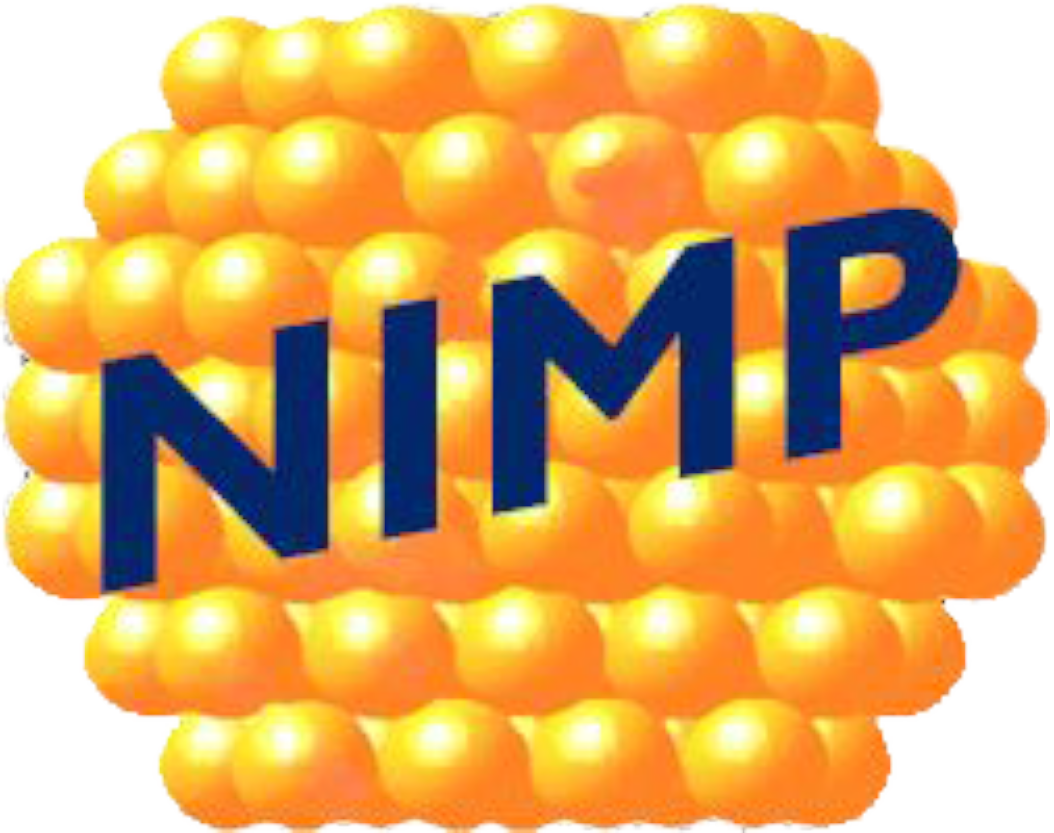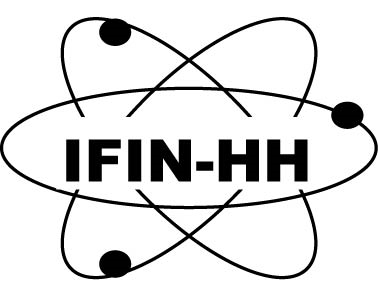Towards perovskite large area photovoltaics
Results
A substantial effort in the project was dedicated for transitioning from the small area spin coating deposition technique, commonly used in research laboratories for developing small area efficient perovskite solar cells (PSC), to large area depositions by appropriate printing-like techniques for each of the layers in a PSC. The main reason for such a transition is the need of developing affordable and environmentally friendly technologies that can be implemented at industrial scale. Thus, although the spin coating is the most accessible method for lab testing of materials fabricated by wet deposition and provides so far the most efficient PSCs, it presents three major drawbacks: inability to deposit large area films (so, it cannot be used to fabricate photovoltaic panels), high material waste and toxicity of the employed chemistry for depositing the halide perovskite (HP) layers. For HP deposition by printing techniques, the chemistry known from small area spin-coating depositions could not be simply translated into a printing technique. Besides adapting the deposition process to the conditions specific to printing technique (slot-die), the main challenge was to reduce the toxicityof the fabrication process, while obtaining reasonable stable PCE values. In this context, both fundamental and applicative research had been addressed in PERLA-PV. The main obtained results are:
1) development of methods for large area deposition from solution, for the different layers in perovskite solar cells (PSC), including the mesoporous scaffoldas our strategy was to fabricate really fully printable PSCs. Before starting the work on PERLA-PV not all the layers in a PSC could be realized by printing techniques. While for printing the HP and the organic hole transporting material (HTM-Spiro-OMeTAD) the Dr. Blade technique can be used, for the mesoporous TiO2 layer no technique applicable on large area substrates was reported in the literature, impeding thus on the scaling-up of the PSC technology towards an industrial process and commercialization. We focussed on this aspect and developed a large area spray deposition technique (RO patent,https://www.webofscience.com/wos/diidw/full-record/DIIDW:201936097W)for deposition of inorganic electron transporter materials (ETM- TiO2 compact) and of the mesoporous scaffold that was optimized for TiO2, SnO2 and SnO2 -QD inorganic oxides, which can be readily translated to industrial production. The solvent of the precursor solutions is an alcohol (ethanol and isopropanol), which has a low toxicity. For the deposition of the HP and of the organic HTM we purchased a slot-die equipment and developed the deposition procedures and parameters for the envisaged different HPs. This way, fully printable large area PSCs on 5×5 cm2 substrates and encapsulated 15×15 cm2 PV modules were fabricated. Also, by employing a solvent engineering (see 2 below), we succeed to print the HP without using any anti-solvent.
2) Compositional and solvent engineering of halide perovskites (HP) for increasing the stability in PSC performance and replace and/or reduce the amount of commonly used toxic elements
The employed solvent and compositional engineering approaches for reducing the amount of toxic solvents and completely skipping the toxic antisolvent treatment while ensuring a successful and reproducible synthesis of the halides perovskites proved to be essential for scaling up to large area PSCs. For the crystallization process of compositional engineered HP layers we succeed reducing the toxicity of the chemistry usually employed in the fabrication process of PSCS by using mixed solvents or add some environmental friendly strong Lewis base ones. The studies started from the CH3NH3PbI3 (MAPI) [https://doi.org/10.3390/ma14154215] to compositional engineered HP double perovskites. These studies explored the possibility of fabricating more stable PSCs without losing much of the performance. For example, the MA substitution with Imidazolium (C3N2H5+) in MAPbI2.6Cl0.4 hybrid perovskite increases the stability of the solar cells [https://doi.org/10.1016/j.solmat.2021.111096]. Additionally, we performed studies for developing more environmentally friendly PSCs, by partially replacing Pb with non-toxic elements, such as alkaline earth and transition metal ions (Mg2+, Zn2+). We found that Zn is more suited to partially replace Pb. The resulting PSCs have shown a slight enhancement of PCE and a better reproducibility than the MAPbI2.6Cl0.4 based PSC [https://doi.org/10.1007/s10854-023-10318-9]. Another approach was to realize the partial replacement of MA cation with functionalized amines (such as amino acids or hydroxyl-amines) because the acid/hydroxyl group will chelate to the surface of TiO2, while their amino group will interact to form the perovskite similar to methylamine in the CH3NH3PbI3, the new compound acting as a “linker” at the interfaces with HP, increasing the connectivity between perovskite 3D crystals and the layers in the proximity (mesoporous scaffold and Spiro-OMeTAD) preventing the iodine migration and acting as a protective shield against moisture [RO patent: A100204/23.04.2024]. As a good solubilisation of lead halides used in HP preparation is only possible with polar solvents, we have studied the replacement of the most toxic solvent, dimethylformamide (DMF) with less toxic alternatives, such as N-methyl-2-Pyrrolidone (NMP) and ethyl acetate (EA) for the preparation of the hybrid perovskites. These studies pointed out that amongst all the solvents studied here, EA is the least harmful (is not toxic at all -is present in wines) and can be a viable candidate for substitution of toxic DMF in MA based perovskites (https://doi.org/10.3390/coatings13020378). Notable, by the research efforts made on compositional and solvent engineering we succeed to completely skip any anti-solvent treatment.
3)Developing theoretical models aiming to understand the degradation mechanisms in PSCs.
Understanding the HP degradation under ambient condition is a complex goal, achievable by the HP compositional engineering and by a proper interface passivation blocking the infiltration of ambient species like O2 and H2O. The intrinsic chemical flexibility and complex physical effects that are behind HP materials are responsible not only for their surprising performance but also for the difficulty of accurately modelling and optimizing their properties [Low-dimensional halide perovskites, Elsevier, Editors: Yiqiang Zhan, Mohammad Khalid, Paola Vivo and NumanArshid, DOI: 10.1016/B978-0-323-88522-5.00012-0, chapter 2 and chapter 5 (joint publication), eBook ISBN: 9780323885232]. We have indicated some of the caveats and current best practices for DFT simulations of their electronic properties and the influence of defects.To narrow down the material choices and to identify on which materials the synthesis efforts should concentrate, the experimental part in PERLA-PV was in strong relation with the theoretical studies (calculations of electronic structure of various possible perovskites, molecular mechanics force field parametrization including interfaces). Investigation of the band alignment started for MAPI – metal oxide interfaces, based on ab initio density functional theory (DFT) calculations at interface level (TiO2 and SnO2/HP and HP/(CuOx or Cu: NiOx) for assessing the favourable charge transfer from the MAPI to the metallic oxide in systems with reduced ion migration. The influence of point defects (vacancies) was also analyzed. Point defects may alter the band alignment, which, depending on their type can be beneficial or detrimental for the role of oxides used as ETM or HTM. We calculated the changes in the band alignment due to defects naturally occurring at these interfaces (vacancies and interstitials). For Cu2O and NiO, used as HTM in contact with MAPI, Cu, Ni and I vacancies enhance the valence band offset while the presence of O and Pb vacancies reduce or even revert the band alignment (Pb vacancies in MAPI/Cu2O case). The role of SnO2 as ETM for a MAPI@SnO2 interface is not clearly evidenced for pristine materials. However, some vacancies can favor a proper band alignment. Thus, our calculations showed that Pb and O vacancies provide a proper band alignment, while Sn and I vacancies not. In order to assess the stability and localization of the interface defect states we performed DFT calculations on MAPI@Cu2O structures with single vacancies (Cu, O, I, Pb) (joint publication submitted to Physical Chemistry Chemical Physics, preprint available at https://perla-pv.ro/repository/). We found that O vacancies at the interface can be spontaneously produced and thus, the picture that emerges corresponds to a degradation mechanism triggered by oxygen atoms. These can further induce the formation of other types of defects. For Electronic band structure calculations and stability assessment of new HP candidates the structures under investigation are being assembled by tetragonal tin oxide SnO2 and the extended class of perovskites of formula FAxMA1−xPb(IyCl1−y)3, obtained by doping FA+ and Cl− ions into parental methyl ammonium lead triiodide perovskite MAPbI3. Chlorine substitutions increase the halide band gap and, therefore, the absorption efficiency decreases. It was also established for 3D halide perovskite families that lighter halogens like bromine and chlorine have better stability. The band offsets in the neighborhood of the ETL/perovskite interface are crucial for the charge separation. In the context of FAx MA1−x Pb(Iy Cl1−y )3, @SnO2 interface electrons are collected in the SnO2 layer, while the holes are confined at the interface. The PDOS calculations for the SnO2 and FA0.5MA0.5Pb(IyCl1−y)3 layers, show that the bandgap tends to increase for larger Cl/I proportions. At the same time, the band offsets are slightly diminished, suggesting that the electron-hole separation is diminished. However, introducing chlorine, the stability of the perovskite is enhanced so that a compromise should be reached for efficiency and stability.
The presence of defect states and charge accumulation at the interfaces result in peculiar capacitive and inductive effects revealed by impedance spectroscopy and dynamic J-V characteristics of PSCs. For explaining such effects, two types of dynamic electrical models are found in the literature, namely, of charge accumulation (CA) and of drift-diffusion (DD). While the CA models are easy to use by experimentalists, they assume unphysical large charge accumulations and meaningless inductive elements (L). In contrast, the DD model offers good physical descriptions of both, capacitive and inductive effects, but the calculations are very complex to be currently employed for simulating experimental data. Therefore, we started developing an easy to be applied model, called further the charge collection model (CC). The CC model is accounting for defect states and charge accumulations at the interfaces and describes the experimentally observed capacitive and inductive effects in PSCs. The model considers that the recombination current (Irec) is controlled by the ionic current, proportional with the electric field (EField) in the perovskite (IJion = σion EField). The presence of IJion in PSCs causes hysteresis in J-V characteristics. Thus, as EField modulates the ionic distribution, it also modulates the recombination rate in the HP. It results that the apparent inductance and the large measured capacitances, are effects due to particular forms of Jrec. With these considerations a stochastic multi-scale dynamic model (m-DEM) was successfully introduced showing that the ionic migration, responsible for the hysteretic phenomena, controls the recombination current in the device and this way it can be directly correlated with the apparent huge capacitance and inductive effects [https://doi.org/10.1103/PhysRevApplied.18.064087, joint publication, – free access from repository: https://arxiv.org/abs/2208.10199v2]. Our analysis provides a bridging point between the controversial models previously reported in the literature. The model brings potential for optimization of PSCs by identifying the physical processes responsible for the degradation and correlating these with the structural elements of the device and it was validated experimentally on PSCs with different types of mesoporous layers (TiO2, SnO2 and SnO2-quantum dots (QD) prepared in house) [joint publication submitted to Colloids and Surfaces A: Physicochemical and Engineering Aspects, preprint available at https://perla-pv.ro/repository/]. Furthermore, molecular dynamics simulations demonstrates the importance of the pressure inside this material on the dynamics of iodide defects [https://doi.org/10.1021/acs.jpcc.3c00657, joint publication]. By molecular dynamics simulations, we show that the OH− ions can bind to the positively charged iodide vacancies and can block the access of the negative iodide ions into those vacancies helping thus in suppressing the migration of iodide and increase the overall stability of the material [10.1109/CAS59036.2023.10303698 – free access from repository: http://arxiv.org/abs/2403.04188, joint publication]. In addition, defect states and charge accumulation at interfaces was modelled revealing theelectronic properties of the interfaces between MAPI and several candidates for hole transporter materials (HTM) and one electron transporter material (ETM), relevant for PSCs (joint publication submitted to Physical Chemistry Chemical Physics).
The results obtained during PERLA-PV were presented in 13 contributions to Conferences/workshops and published or submitted for publication in 11 Scientific journals and 2 book chapters.








